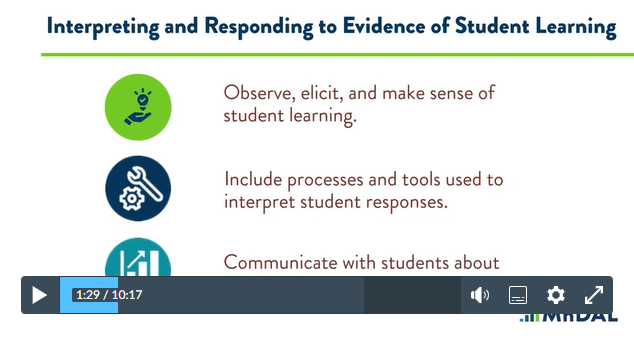Adjust Instruction
We interpret and respond to student work for a variety of purposes and situations in the classroom. Sometimes, we provide feedback quickly about next steps in learning during learning in the classroom. Other times, we need to review student work products more carefully in order to provide meaningful feedback that students can apply to improve their future work. What’s more, we may quickly score work, like homework tasks, primarily to make sure students completed it and are on the right track, or we may need to provide more carefully considered grades to sum up a student’s achievement over a period of learning on a classroom summative assessment. These different scenarios require different analysis tools and approaches. The resources below focus on some foundational considerations to ensure that anytime we are making sense of evidence provided by students, we are doing so in ways that promote learning and foster equity.


